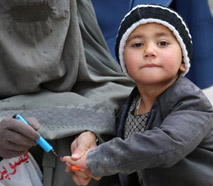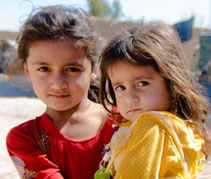
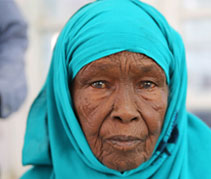
Promoting healthier populations
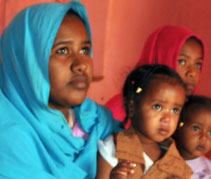
This can be extremely challenging since it requires concerted, coordinated, long-term efforts across many government departments and sectors. Nonetheless, in 2019 there were significant developments in many areas, including:
stepping up strategic action to improve the health of newborns, children and adolescents;
securing high-level commitment for action on NCDs such as cancer and heart disease;
encouraging progress in the fight against the menace of tobacco; and
launching a new regional Commission on Social Determinants of Health.
Improving child and adolescent health
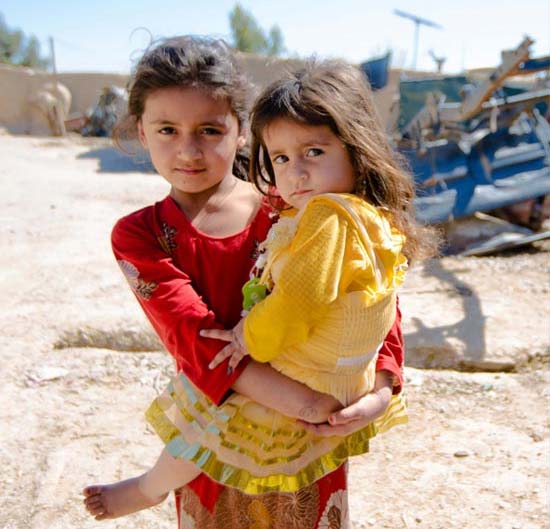
Our work to promote effective and timely health interventions received a boost in October 2019 when the Regional Committee endorsed a new regional implementation framework on newborn, child and adolescent health to guide work in this area over the period 2019–2023.
Children and adolescents make up around a third of the entire population of the Eastern Mediterranean Region, and improving their health is an urgent priority. The Region has the second highest mortality rates for newborn children and those under the age of 5 of any WHO region. More than 800 000 children died in the Region before their fifth birthday in 2017, and most of those deaths could have been prevented.
Meanwhile, the death rate among adolescents in the Region has risen significantly since the year 2000, despite falling across the rest of the world.
While ending preventable deaths remains a key objective, the new framework aims to ensure that babies, children and adolescents do not just survive but thrive. There are huge variations within and between different countries of the Region in morbidity and mortality rates for these age groups (see Figs. 6 and 7), and the framework is designed to meet the distinct requirements of different countries. It provides guidance for countries on selecting priority actions, essential interventions and relevant progress indicators. It emphasizes the fundamental need for integrated interventions across the life course and the continuum of service provision, multisectoral action and partnerships, and also recognizes the specific difficulties facing underserved populations and people in humanitarian emergencies.
Strengthening maternal and reproductive health
Supporting healthy ageing
Improving access to assistive technology
Preventing violence and injuries
Reducing harm from environmental risks

Environmental and occupational risks cause about one quarter of the total regional morbidity burden of diseases, including NCDs (55%), communicable diseases (20%) and injuries (25%). The key environmental risk factors facing the Region include air pollution, inferior water, sanitation and hygiene (WASH), chemical and radiation exposure, waste mismanagement and climate change. WHO’s approach to tackling them emphasizes multisectoral prevention and remediation, in line with the strong emphasis on multisectoral action in Vision 2023.
Progress in 2019 included work on air pollution. WHO conducted an expert consultation on communicating evidence-based recommendations and early warning messages to health care workers, facilities and patients, and also ran training on the health impact assessment of air pollution.
Action on WASH included a regional workshop on monitoring SDG6 WASH indicators plus extensive work on monitoring and reporting on water and sanitation in countries of the Region. An assessment tool on health care waste management was developed, and a WHO manual on sanitation safety plans was made available in Arabic.
A regional plan of action for responding to chemical events was finalized through a regional consultation and a regional network of poison centres was initiated; work on food security included, among other things, enrolling five countries in the tricycle project to implement an integrated surveillance system for bacterial resistance to antibiotics in humans, the environment and the food chain; and extensive technical support was also provided for projects on climate change and health.
Plans to implement the regional framework for action on health and the environment (2019–2023) were compiled in consultation through consultation with 19 countries of the Region in December 2019.
Galvanizing action to tackle NCDS
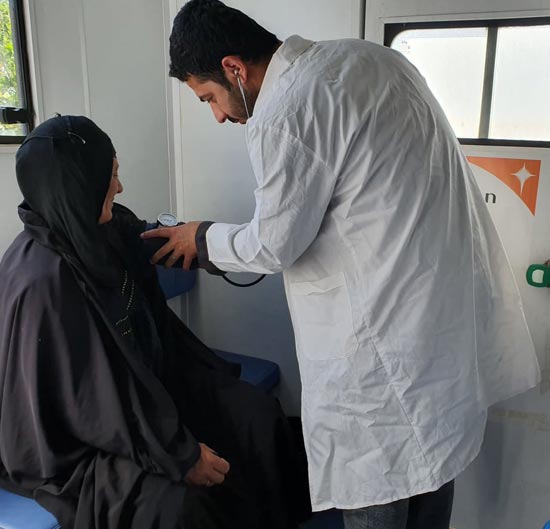
To achieve sustained improvements in the health and well-being of their populations, countries need to address the underlying risk factors for NCDs. This is challenging because it requires sustained action across many different sectors. Strong political leadership is therefore essential.
In November 2018, world leaders reaffirmed and extended their commitment to preventing and controlling NCDs through a Political Declaration of the United Nations General Assembly, and WHO sought to build on that momentum in the Eastern Mediterranean Region in 2019.
A revised and updated version of the regional framework for action on NCDs was endorsed by the Regional Committee in October 2019. The new edition of the framework was extended in line with the 5 by 5 approach adopted globally: mental disorders were recognized as a fifth major group of NCDs, alongside cardiovascular diseases, cancer, respiratory diseases and diabetes, and air pollution was added to the list of key risk factors which also includes tobacco use, unhealthy diet, harmful use of alcohol and physical inactivity.
In addition, the new framework includes a stronger focus on NCD economics, high-level multisectoral engagement, the strengthening of national cancer registries and overall national cancer control response across the continuum (from prevention to palliation), and the integration of NCD services at PHC level in both stable and emergency settings.
The Regional Committee also endorsed a new framework for action on substance use, which affects more than 6% of adults in some countries of the Region and is associated with a range of illnesses. The framework identifies cost-effective, affordable and feasible strategic interventions across five domains: governance; health sector response; promotion and prevention; monitoring and surveillance; and international cooperation.
Both the revised NCDs framework and the new substance use framework specify indicators so that countries can measure their progress.
A new regional framework for action on rheumatic heart disease was also endorsed by the Regional Committee, and an expert network will guide work on its implementation in the 2020–2021 biennium.
Meanwhile, following the announcement of a WHO global initiative on cervical cancer in 2018, a regional consultation was undertaken to provide input into a forthcoming new global strategy. That meeting and related work led to a set of priority countries and interventions for the coming biennium, to allow country level implementation of the global initiative.
The regional roll-out the WHO Global Initiative on Childhood Cancer was also initiated and Morocco was selected as the first regional focus country.
Combating tobacco use

There was encouraging news regarding ongoing efforts to combat the serious health menace of tobacco use in the Region in 2019. For the first time, the WHO global report on trends in prevalence of tobacco use showed a projected decline in tobacco use in the Region over the coming five years, while the WHO report on the global tobacco epidemic documented good developments in implementing policy measures under the MPOWER package in the Region: six countries increased tobacco taxes, another six progressed other MPOWER policies and seven countries conducted adult and youth surveys to monitor the tobacco epidemic.
However, the tobacco industry continues to resist controls. Markets are now being bombarded with novel tobacco products such as e-cigarettes and heated tobacco products. While the health consequences of their use are documented and undeniable, these products are marketed as cleaner alternatives to conventional cigarettes, as smoking cessation aids, or as “reduced risk” products, thereby threatening to undermine or circumvent existing tobacco control measures. WHO organized an important regional consultation in July 2019 to examine the risks and possible responses.
WHO’s regional team also collaborated with the Global Center for Good Governance in Tobacco Control to develop and release a package of eight factsheets to inform countries about tobacco industry tactics to interfere with tobacco control policies. The package discusses how the tobacco industry continues to create barriers to life-saving tobacco control measures, whether selling its new products or traditional cigarettes, and provides guidance on what countries should be on the lookout for, and what they should do.
There was also progress with regard to the Protocol to Eliminate Illicit Trade in Tobacco Products to the WHO Framework Convention on Tobacco Control, a key policy tool to reduce tobacco use and its health and economic consequences. Kuwait acceded to the Protocol, bringing the total number of parties in the Region to six.
Launching a new regional nutrition strategy
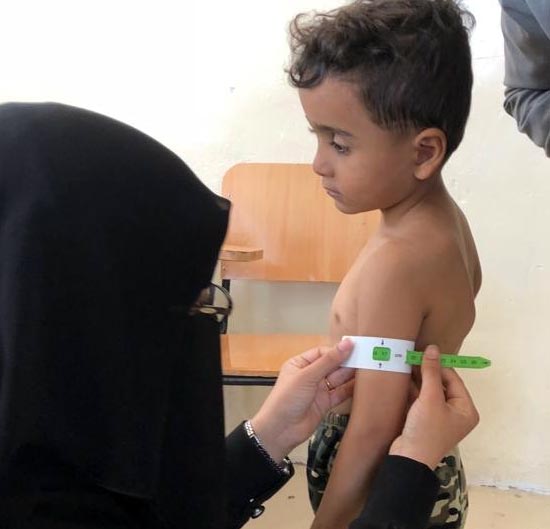
Malnutrition is a major problem in the Region. In lower income countries and those affected by humanitarian emergencies, undernutrition continues to be a serious concern: more than 20 million children under the age of 5 are estimated to suffer from stunted growth. At the same time, around 45% of adult men and more than half of adult women across the Region are obese, largely due to a combination of poor diet and lack of exercise.
A new regional strategy on nutrition was approved by the Regional Committee in October 2019. The new strategy will guide WHO’s work with countries throughout the coming decade, and brings together previous landmark commitments to improve nutrition and tackle NCDs, including those now enshrined in the SDGs. It specifies ambitious action across the six key areas of the United Nations Decade of Action on Nutrition: sustainable, resilient food systems for healthy diets; aligned health systems providing universal coverage of essential nutrition actions; social protection and nutrition education; trade and investment for improved nutrition; safe and supportive environments for nutrition at all ages; and strengthened governance and accountability for nutrition.
It is possible to achieve significant improvements in nutrition if the right policies are implemented effectively. Although stunting is still widespread in the Region, its prevalence among children under 5 has fallen from 40% in 1990 to below 25% now (see Fig. 8). Furthermore, regulation and sin taxes on products such as soft drinks have been successful in cutting levels of sugar, salt and trans fats. Much work remains to be done, but the new strategy should be an important resource in supporting comprehensive, multisectoral action at country level to address malnutrition in all its forms across the Region.



